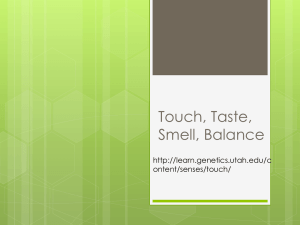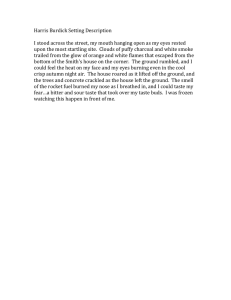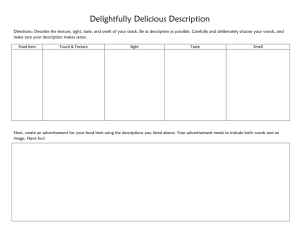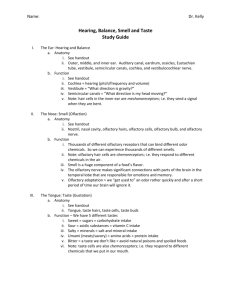7. Taste and Smell WEB
advertisement
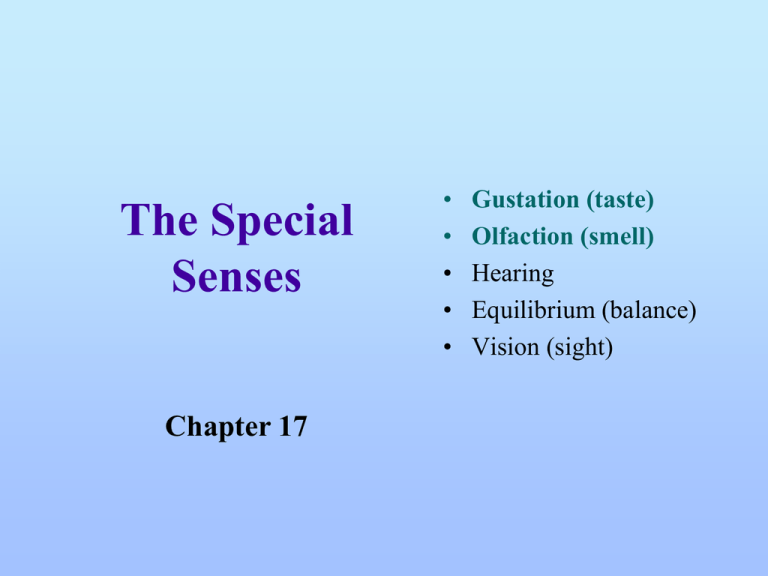
The Special Senses Chapter 17 • • • • • Gustation (taste) Olfaction (smell) Hearing Equilibrium (balance) Vision (sight) The Chemical Senses: Taste and Smell • The receptors for taste and smell are chemoreceptors • Chemoreception involves chemically gated ion channels that bind odorant or food molecules • Depolarization of the receptor cell causes it to release neurotransmitter that stimulates nerve impulses in the sensory neurons Taste Taste Chemoreceptors - Taste Buds • Located mostly on papillae of tongue Fig. 17.7 Basic Tastes Simplified Version: • Sweet • Sour • Salty • Bitter New Tastes: • Umami = savory (like MSG) • Taste of fat • Taste of “heat” from chili peppers Sensory Pathways for Taste • From facial nerves to medulla oblongata, then thalamus, then sensory cortex • Afferent impulses of taste also stimulate reflexes which promote digestion Smell Location of Olfactory Receptors In olfactory epithelium in nasal cavity Transduction of Smell • Humans can distinguish thousands odors • The binding of an odorant molecule to a specific receptor causes gated Na+ channels to open, leading to depolarization • Olfactory Pathways From cranial nerve I (olfactory) to: 1. the olfactory cortex where smells are consciously interpreted and identified 2. the limbic system where smells elicit emotional responses 3. sympathetic nervous system & stimulate digestive processes

